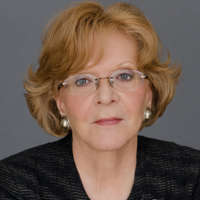Now that you know what the Institute for Comprehensive Community Development is, my task is to answer two very important questions: Why an institute? Why now? You may ask why a new organization and why now, when most people say there are already too many, with overlapping agendas, competing for money, with some even struggling just to stay alive.
Why indeed? Because, and I say this with confidence and with conviction, the Institute for Comprehensive Community Development both responds to a need and it will lead. These are two very different purposes — and the Institute will serve both well.
It fills a need right now that has been created by the convergence of three powerful forces. First, there is an increasing base of evidence that comprehensive community development addresses the reality of lives lived in neighborhoods all over this country — lives where housing, education, jobs, services, recreation, and safety connect and have impact in ways that are both good and bad for individuals, families and the neighborhoods themselves. That complicated and connected reality has, once and probably for all, put the nail in the coffin of approaches that address one issue at a time or that fail to pay attention to the context within which an issue plays out.
Local leaders understand this, and after years of comprehensive efforts — with admittedly mixed results — they do not want to figure out what they should do from scratch. The Institute will tap into that base of evidence and share with those local leaders and organizations the underlying principles and promising practices of the most recent efforts. The Institute will expand that base of evidence as it provides the assistance that local leaders need to adapt the principles and practices to their own social, economic and political realities.
Second, this renewed interest in comprehensive approaches is matched by the new and very welcome initiative at the federal level to integrate federal programs so that they can more effectively address complex issues on the ground — issues that are at the intersection of housing, energy and transportation; at the intersection of housing, education and justice; at the intersection of the labor and housing markets; and at the intersection of commerce, technology, innovation and education. These are programs unlike any that we have seen in a very long time at the federal level: the Sustainable Communities Initiative; Choice Neighborhoods; Promise Neighborhoods; Regional Integrated Planning Initiatives; Livability Initiatives and, most important of all — the creation of the White House Office of Urban Affairs and the cross-agency working groups under the leadership of the Domestic Policy Council. Through its training and technical assistance, the Institute will make sure that neighborhoods are prepared and able to be good partners to a federal government that is looking for local reflections of its own efforts to break down silos.
Third, macro level forces, like the economic decline and the certainty that not all aspects of the economy will recover quickly, place a premium on building the networks, institutions and relationships that hold the promise of making a neighborhood more resilient in the face of major shocks and more able to take advantage of opportunities as they arise.
This the Institute will do, with its purposeful development of what we call in Chicago the platform. The platform is just that, a collaborative infrastructure of trusted allies — people and institutions, philanthropies, businesses and representatives of local government — that together can quickly respond to opportunity or to challenge, like the possibility of attracting a new grocery store or the relocation of a major employer. The Institute will describe what it takes to build these platforms: the broad-based planning around ways to improve the quality of life; the early action projects that engage everyone, demonstrate that success is possible and momentum can be sustained; and the intermediary that provides technical assistance, brokers connections outside of the neighborhoods and provides economies of scale with programs that support multiple neighborhoods.
With platforms in place in multiple neighborhoods, the cost to government, foundations, businesses, developers and others to design and test new programs, for start up, and for investment is diminished. All of this instinctively makes sense, but the Institute will share the experience of what works and what does not.
These three forces say YES to an institute and YES to right NOW. They tell the story of how the Institute responds to a real and urgent need.
But I acknowledge the power of threes. There are also three ways that I think the Institute can be even more essential and ambitious — not only respond to need but to lead.
First, I would like to see the Institute at the intersection of two very important conversations that are taking place right now. After years of both advocacy and building evidence, it is almost universally accepted that metropolitan regions are the drivers of national prosperity and global competitiveness. This is the metropolitan conversation. At the same time, and exemplified by the emerging consensus around the need for comprehensive community development and the creation of the Institute itself, there is the community or neighborhood conversation.
Each acknowledges the other, but I fear that in both it may be just lip service, and that neither actually knows what it will take for the metropolitan conversation to value the contribution that vital, functioning neighborhoods make to the strength of a region, or how to include in the metro strategy the tactics that attend to the neighborhood. By the same token, I fear that a singular focus on what is happening in a neighborhood limits, for example, the ability of local leaders alone or together to affect city or regional transportation policy or for residents to participate in the regional labor market.
I would like to see the Institute aggressively put itself in the middle of these conversations and bring them together — to ensure that each authentically takes account of the other and that key players figure out how to move beyond rhetoric to what it actually takes to connect the dots between the two levels of social and economic activity.
I would like to see the Institute become a real voice — not just for LISC — but for the field as a whole, as it continues to grow in sophistication and as it makes operational the assertion that we both hear and make — that that strong neighborhoods are essential to the strength of the metropolitan region and therefore essential as well to national prosperity and this country’s global competitiveness.
Second, I would like to see the Institute lead in the creation of evidence. Without evidence of what works and what does not, actors at the local, regional and federal levels will not know that precious human capital and financial resources are being dedicated to programs and practices that will actually produce the outcomes they want. This country’s fiscal crisis dictates that declining resources not be wasted and solid evidence will increase the likelihood that wise decisions will be made.
As part of this, I would like to see the Institute take the lead in the creation of a whole new set of metrics — not the standard metrics that tell us how many units, square feet, dollars of investment, rates of crime, school performance and more. But the metrics that will reveal the power of the platform, and its ability to create what RW Ventures’ Bob Weissbourd calls an enabling environment — an environment that both increases resilience and makes it easy to attract and seize opportunity.
At the same time, I caution the Institute not to admire the platform as an end in itself, but to always recognize that its ultimate purpose is be used to achieve the quantifiable outcomes, those tangible rates of change, that signal that a community and the quality of life if its residents are improving.
Third and finally, I hope the Institute will lead in a truly vital effort, one for which it is ideally suited — to identify, nurture and support new generations of leaders in the community development field. People in their forties are certainly coming into their own right now but also right now there is a generation rising — the Millennial Generation. These are young people who are seeking the opportunity to contribute to their communities, who appreciate the market and, at the same time, value the common good. They believe that there is a role for an active government in ensuring quality of life and opportunity; they are not looking for the most money but the greatest satisfaction in life. They are innately social and understand how to function in a team, and they know how to put the technology they have grown up with to work to communicate and solve problems together.
To truly lead, the Institute should reach out and make sure that the values and energies of this new generation are harnessed for the effort to make our communities strong for the long haul. There it is: the convergence of three powerful forces that demand an institute — right now. And, three ways that the Institute can stretch, lead and make a lasting contribution, beyond its vital support to neighborhoods across the country.
I am excited about the Institute, and pleased that all of you are here to witness its birth and wish it well.




